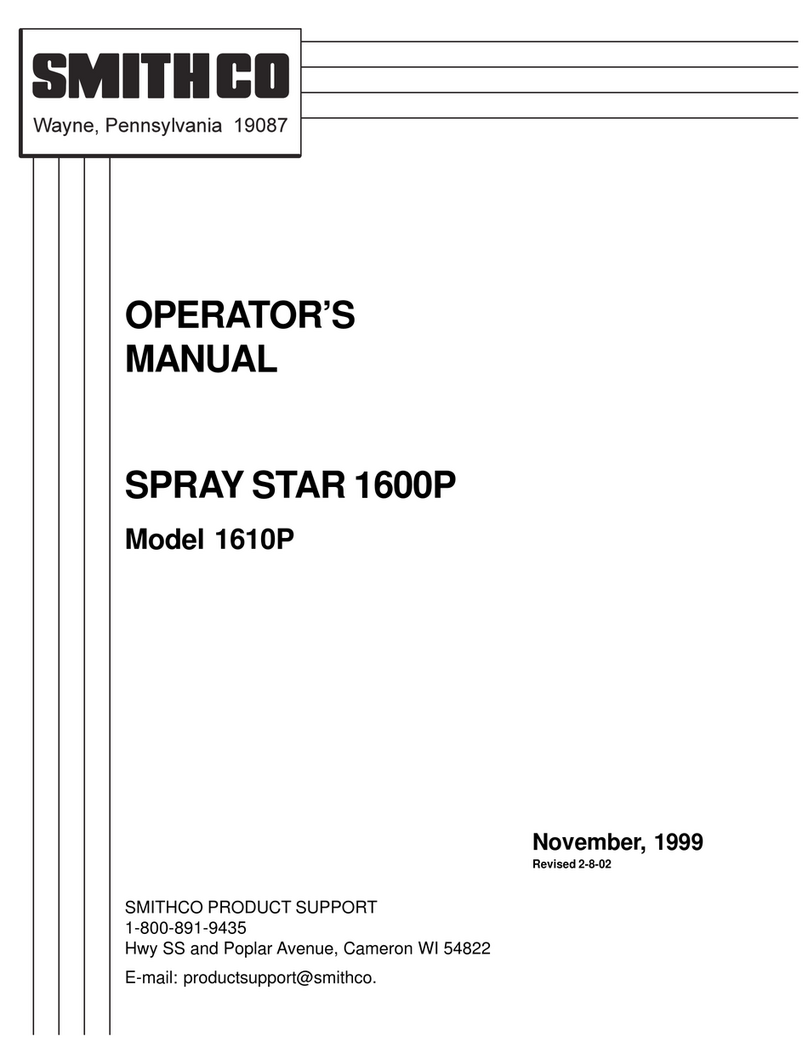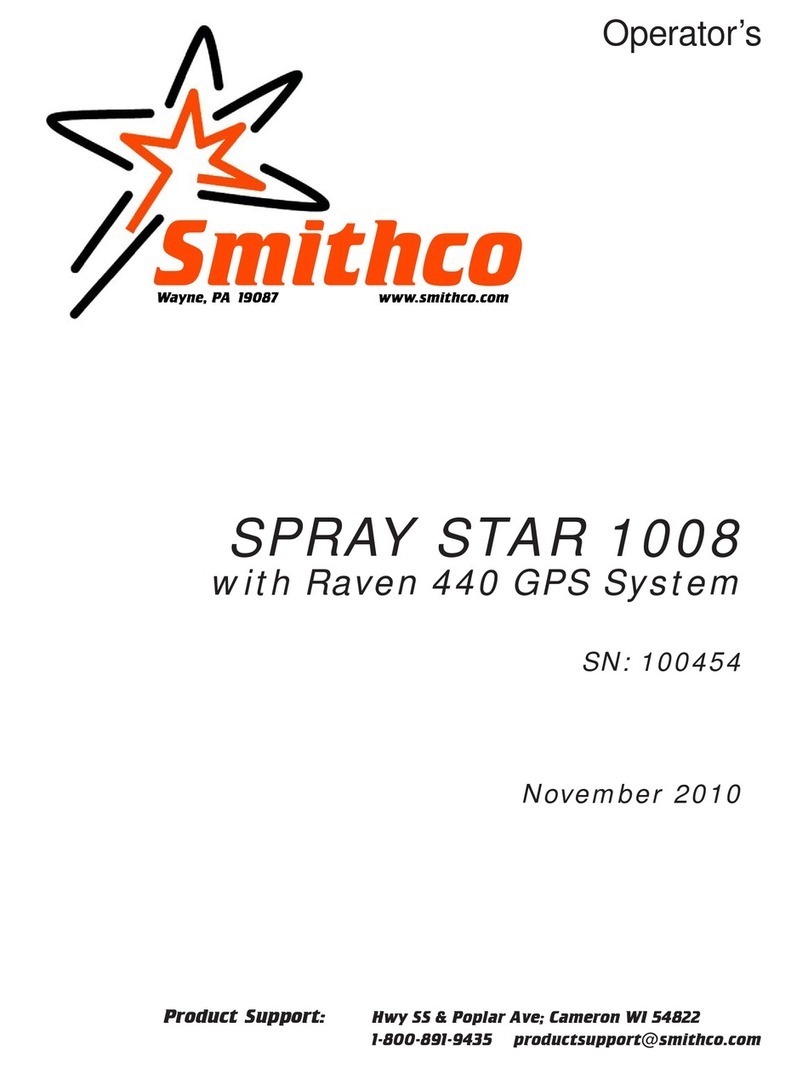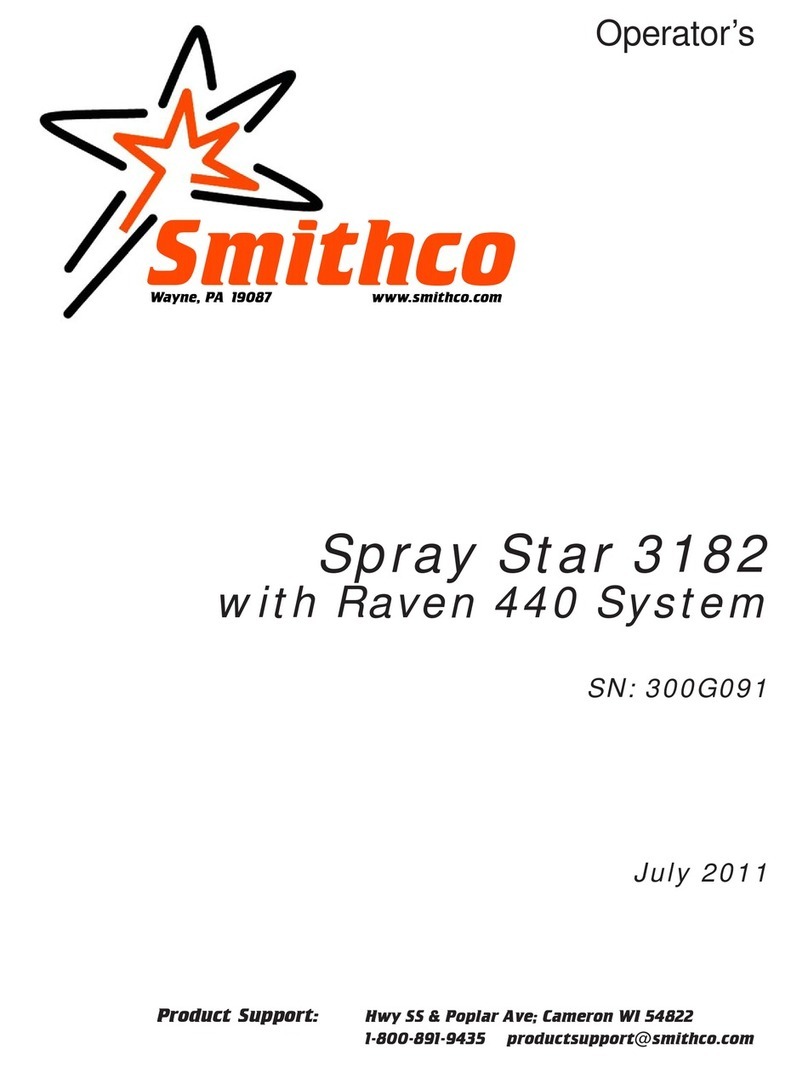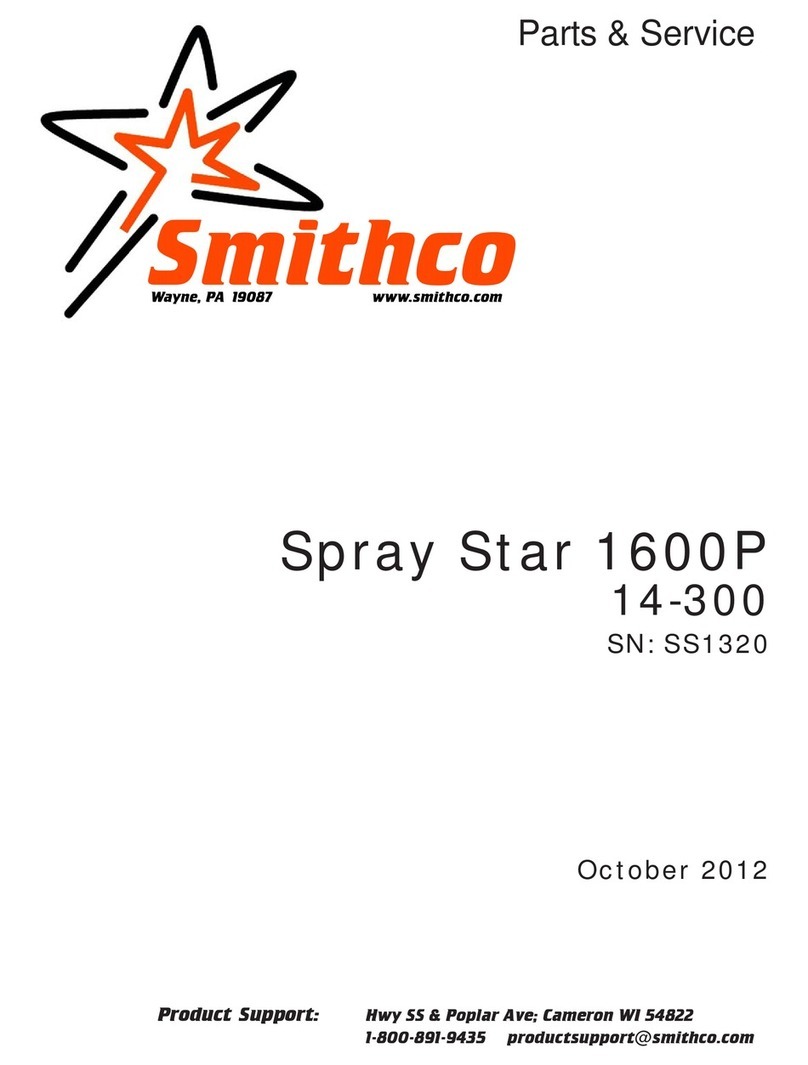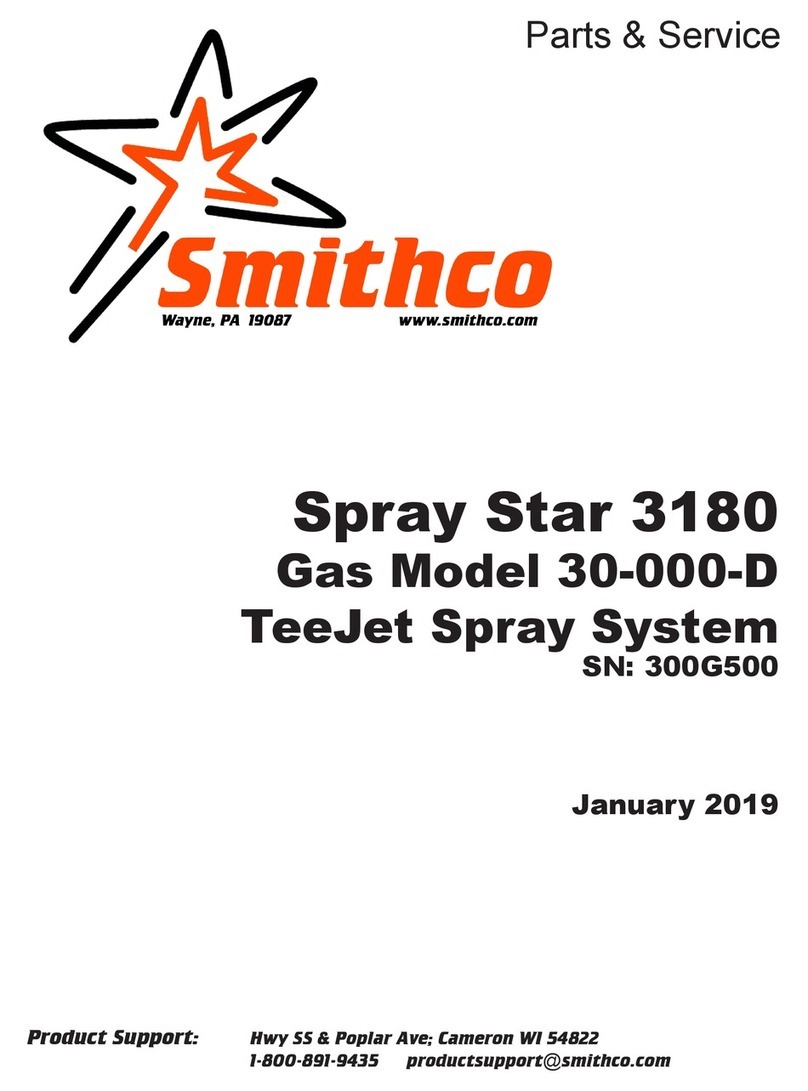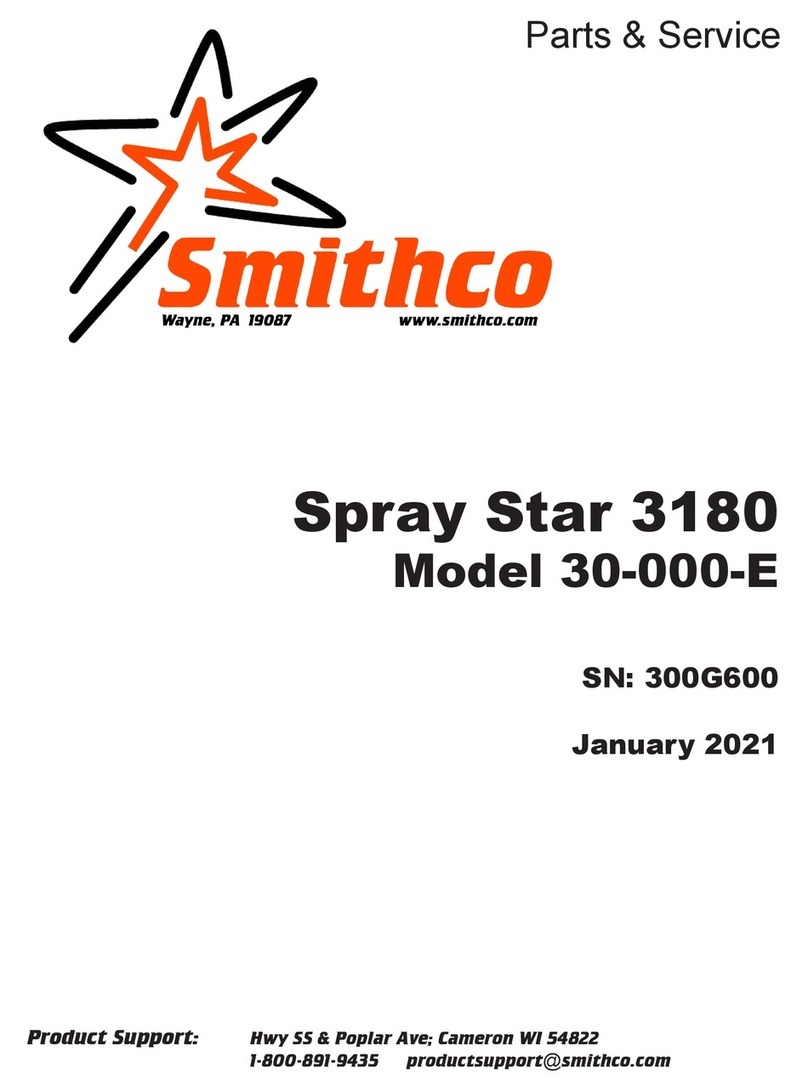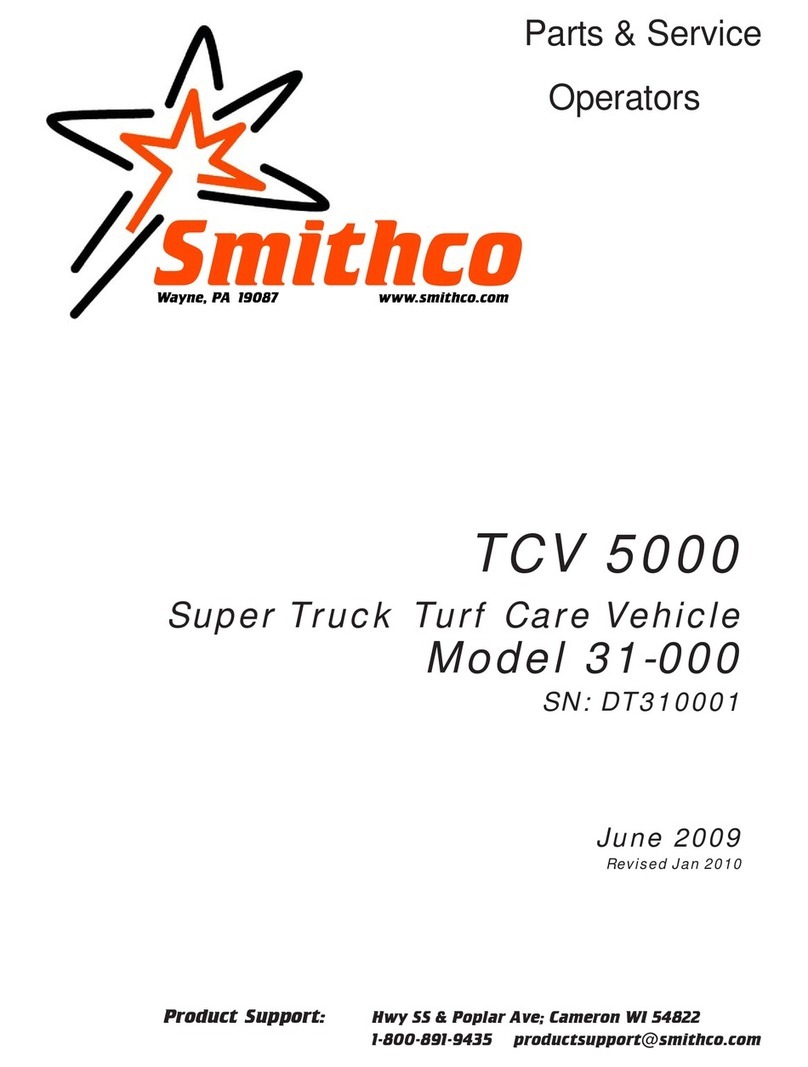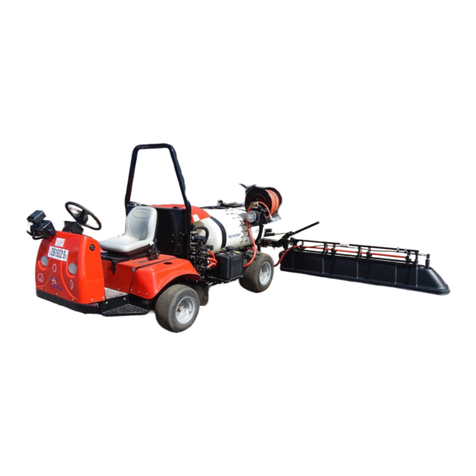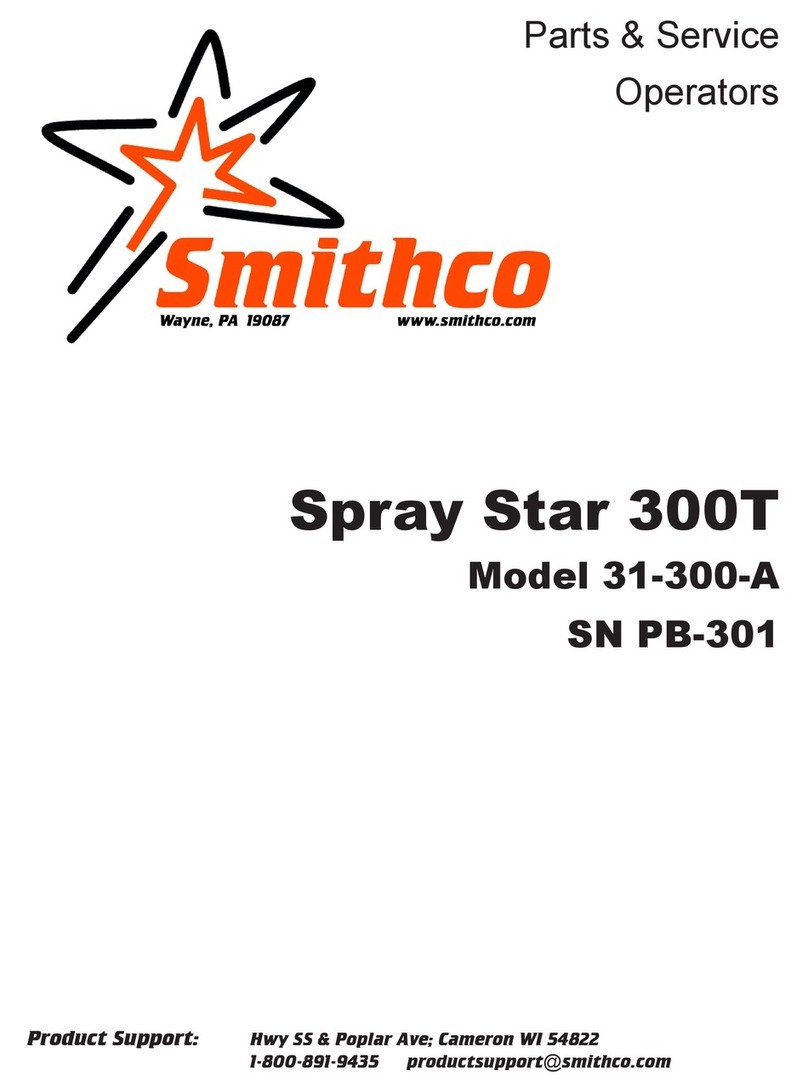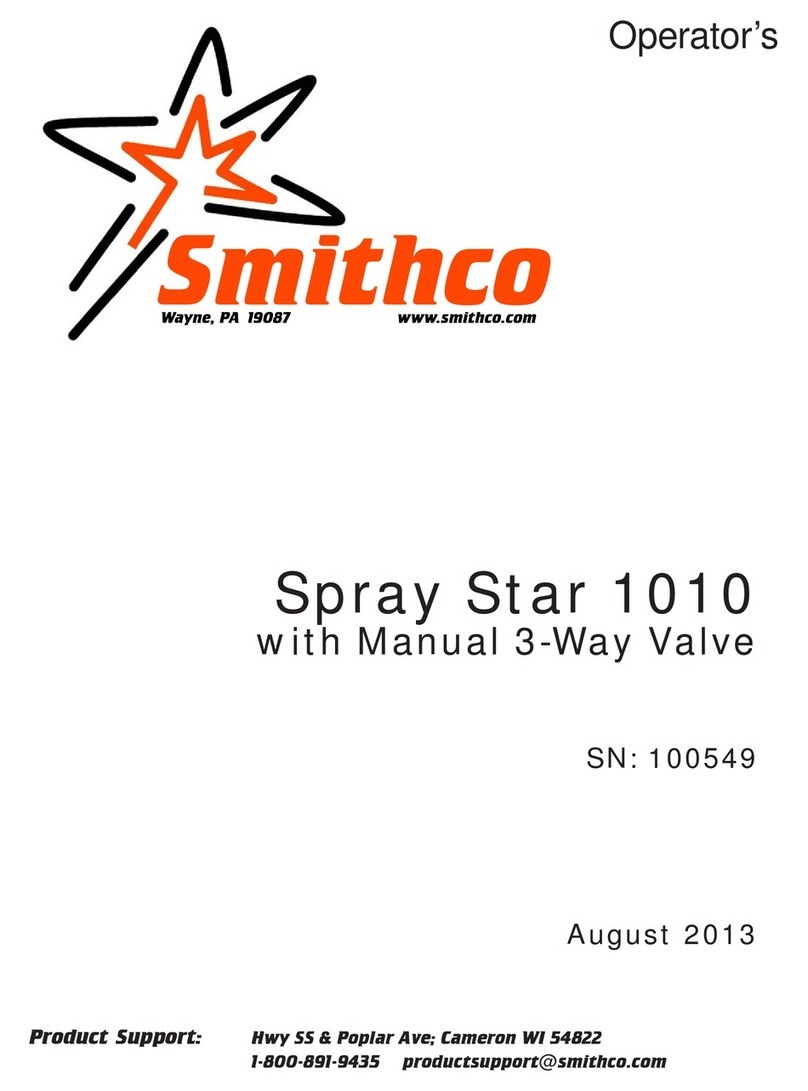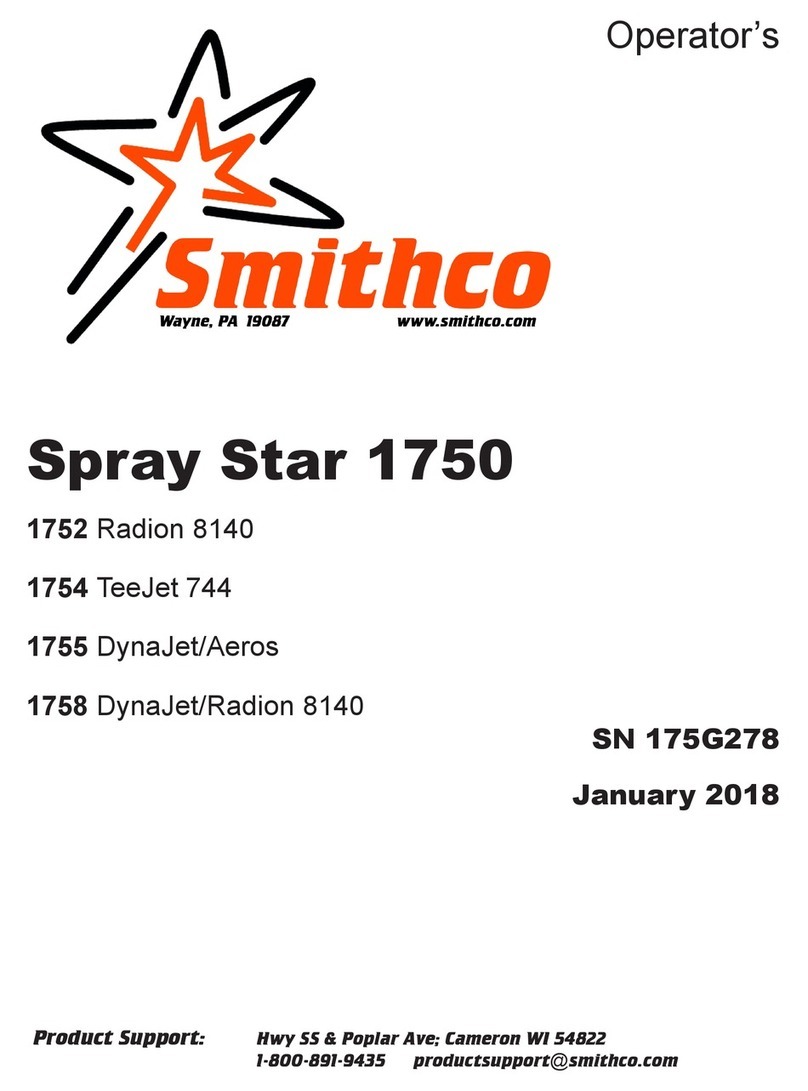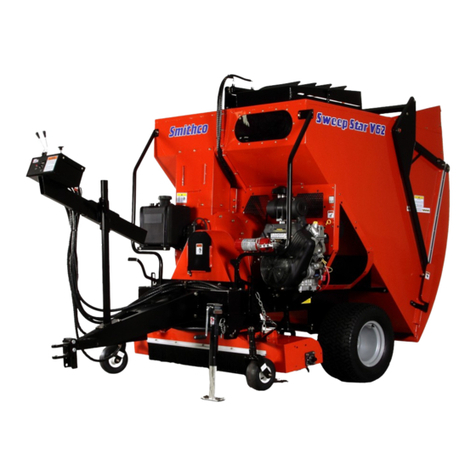
7
Introduction
SETUP
TheSprayStar3184 arrivesfrom Smithco setup andready forservice. Depending onfreight conditionsbattery
installed.
The spray system is normally shipped attached to the 3180 Prime Mover. If a spray system is to be fitted to a
Prime Mover by a dealer or factory, assemble and attach the components in accordance with the parts drawings
inthe Spray Star3180 Parts/Service Manual.
1. Check the tire pressure. The front tires are 20 psi (1.4 bar)
and rear tires are 30 psi (2.0 bar).
2. Batteryis located under seat.Thisis a negative grounding
system.
Connecting battery cables to the wrong post could
result in personal injury and/or damage to the
electrical system. Make sure battery and cables
do not interfere or rub on any moving part. Con-
nect red positive (+) cable (A) to battery first.
When disconnecting remove black negative (-)
cable (B) first.
3. Check hydraulic fluid level in tank located under the seat.
Removecap and add SAE10W-40API Service SJ orhigher motor oilif necessary. Fluid level shouldbe
about 2-21/2"(5-6.4 cm) from thetop of thetankwhen cold. DONOT OVERFILL.
4. Fill fuel tank, located on right side, with No. 2 diesel
Fuel is flammable, caution must be used when storing or handling it. Do not fill fuel tank
while engine is running or an enclosed area, fumes are explosive and dangerous to inhale.
DO NOT SMOKE while filling the fuel tank. DO NOT OVERFILL
5. Machineshould be greasedbefore starting,refer to SprayStar 3180 Parts/ServiceManual for location.
6. Attach the Spray Boom and any other Optional Equipment to the Prime Mover, in accordance with
instructions in the Spray Star 3180 Parts/Service Manual. The nozzles must be the correct distance above
theturfas described in Turf Spraying Guide.The sprayboom must operate properly andthe outer sec-
tions must break away safely if an object is struck by them, they must then return to normal operation
position.
7. Be sure to double check boom heights, nozzle spacing and displacement before spraying.
8. Machine is shipped with windshield washer fluid in to prevent freezing. Flush system completely with clear
water. Fill tank with water and retighten the four bolts used to hold the tank in place.
9. Readoperating instructionsbefore starting.
Never allow pump to run dry! The valve on the suction side of the pump (between the pump
and tank) must be fully open whenever the pump is operated.
FUEL
CHECKEMISSION REGULATIONS OFYOURAREA
With Emission control now in effect diesel fuel specification type and sulfur content % (ppm) used must be in
compliant with all applicable emission regulations for the area in which the engine is operated.
Use of diesel fuel with sulfur content less than 0.10% (1000 ppm) is strongly recommended.
If high sulfur fuel is used, change oil and oil filters twice as often.
DONOT USE Fuelsthat have sulfurcontent greater than1.0% (10000 ppm).
Dieselfuels specified inEN 590 orASTM D975 arerecommended.
Since KUBOTAdiesel engines of less than 56kW (75 hp) utilize EPATire 4 and Interim Tier 4 Standards, the use
oflow sulfur fuelorultra low sulfurfuel is mandatoryfor these engines,whenoperated in USEPAregulated ar-
eas.Therefore, use No.2-DS500 or S15diesel fuelasa alternativetoe No. 2-Dfor ambient temperaturesbelow -
10°C(14° F).





